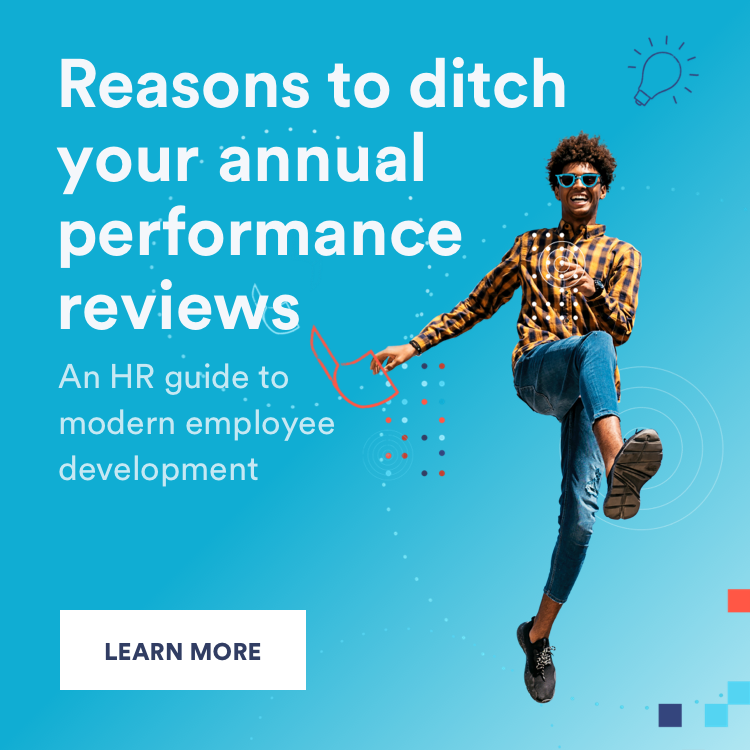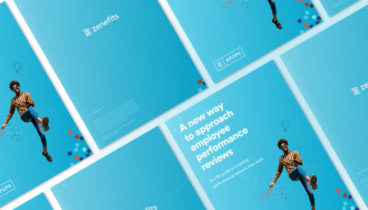Learn how to streamline your performance management system, better reach organizational goals, and boost employee morale.

Performance management is an essential component of a business’ overall strategy for success, but is it more complicated than it needs to be?
It goes without saying that meeting goals is important. Businesses consistently create new benchmarks to grow and improve when it comes to their bottom line, but they should devote the same care when it comes to a company’s performance management goals as well.
The pandemic may have changed how and where people work, but unlike the traditional ways of managing an employee’s output, new performance management strategies should be flexible to accommodate recalibrations within the company itself and a changing workforce.
This doesn’t have to mean a lot of trial and error on the part of HR managers. Many common solutions have emerged in simplifying performance management to make strategies more streamlined without putting employee morale on the chopping block.
Changing the employee review
“55% of workers believe annual reviews don’t improve their performance.”
One of the worst tenets of the traditional management system was the annual employee review. Too frequently, these reviews focused on negative observations and by only scheduling these meetings once a year, positive changes could not be made in real time. In fact, 30% of employees reported they would begin looking for a new job after receiving a negative review.
However, this doesn’t have to be a dreaded event within company culture. Many HR leaders may want to make small adjustments to the company’s current strategic framework or completely change it, like eliminating ratings for employee outputs. According to a 2019 Workhuman Analytics & Research study, “55% of workers believe annual reviews don’t improve their performance.”
So what will actually make employee reviews better? Focusing on employee satisfaction. This doesn’t mean completely throwing out reviews altogether. Employees use company benchmarks to plan for their own career growth while their employers use their performance reviews to “inform compensation, promotion and succession-planning decisions as well as to drive employee performance, development and engagement.”
Establishing measurable metrics for employee performance is imperative. But equally important to improving employee productivity and job satisfaction include:
- Frequent feedback, both positive and constructive
- Offering employees ways to improve or learn a new skill
- Empowering a collaborative team between peers and managers
- Creating a seamless onboarding experience
Align employee goals with company objectives
Keeping a healthy, happy workplace for employees is a key element to fostering success, but it is not the only factor to consider when simplifying performance management. Next, consider how employee goals align with company objectives. Is employee morale up but no real strides are being made toward company benchmarks? Or is the reversal true where the success of the company feels like it’s at the expense of the employees, leading to burnout?
When these two components are out of balance, one or both parties can feel like they’re getting the short end of the stick. Using company objectives to guide employee productivity goals is an active choice leadership can make in creating a symbiotic relationship.
Using company objectives to guide employee productivity goals is an active choice leadership can make in creating a symbiotic relationship.
Employees who feel invested in their workplace are more likely to have higher productivity, better customer service, and reduced absenteeism. Steps companies can take include:
- Allowing employees to set sub-goals for their work, instead of monitoring efficiency based on hours or long-term goals
- Focusing on employee training and supporting their goals
- Avoiding incentives — this may seem counterintuitive, but incentives usually only contribute to temporary behaviors, and may not affect employee productivity in the long term
Opportunities like “company-based mentorship programs” or even online platforms and courses could become invaluable in training new employees and retaining them longer.
According to a go2HR study, “40% of employees with poor training will leave the company within the first year.” So if investing in employee skills from the start makes them want to stay, it could ultimately help companies reach initiatives faster.
Simplify the onboarding system
With putting employee satisfaction and company objectives on equal footing, using an all-in-one onboarding system completes the trifecta for simplifying performance management. To enable communication without confusion, implement onboarding that allows you to:
- Create, update, and track goal progress
- Align employee goals to broader team, departmental, or organizational goals, and
- Automatically integrate your employees’ goals into their performance reviews
Like the Zenefits onboarding platform, a business wants user-friendly software to improve employee performance and create a space for continuous feedback.
New hires should also be considered when revamping a company’s onboarding experience. Creating one space for employee resources, company objectives, and other knowledge necessary to becoming a full-functioning team member is a crucial training tool and resource for employees and managers alike.
There is no confusion in what managers will expect and how work carried out by employees fits into the larger goals of their employer. Not to mention, streamlining the onboarding system means standardizing the education new hires receive.
Ultimately, a management strategy should foster:
- Clear communication channels between employees and managers
- Continuous feedback rather than annual reviews
- Digitized and comprehensive onboarding and new hire training
Implementing a performance management plan
What all this information adds up to is the process of simplifying is a very complicated one — a process that will undoubtedly always be changing. The strategy in pursuit of happier employees who stay longer and yield higher returns for the company should be flexible to react to real-time experiences to make necessary (not superfluous) changes. By implementing a core performance management plan, adapting will be a quicker process, because as we all know, time is money. But how a company gets there will entirely depend on how successfully they can balance those priorities.
Take a look at our performance alignment checklist to help shift your organization from performance management to performance alignment. These 11 steps are a surefire way to boost productivity and make sure you are on the right track.







